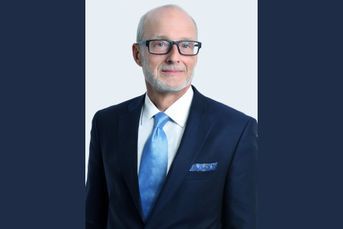SECURE 2.0 occupies rare common ground, tees up progress

The House approved the retirement-industry boosting SECURE Act 2.0 in a landslide, setting the stage for a Senate vote in the back half of 2022.
This article is one in a series of midyear outlooks for 2022 by the InvestmentNews team.
Retirement is not a partisan issue.
At least we don’t expect it to be in the coming months. And that’s a good thing for savers, employers and the rest of the retirement planning industry.
Retirement account balances across the country may have dropped during the first half of 2022, but our public servants in Washington stepped up when it comes to saving for retirement. The House of Representatives passed the Securing a Strong Retirement Act of 2022 on March 25 by a total of 414 to five.
Yes, you are viewing that 399-vote winning margin correctly. SECURE Act 2.0 brought Democrats and Republicans together (at least for a day). The bill sailed through the House in a landslide, setting the stage for what should be a similarly lopsided victory in the Senate in the back half of 2022.
In fact, the legislation might even see passage before the all-important midterm elections, although you might not want to bet on it considering the original SECURE Act was passed by the Senate (71-23) on Dec. 19, 2019, in a pre-Christmas rush. President Trump signed it into law the following day.
Still, even if it does take until Christmas for the Senate to pass SECURE Act 2.0, it bodes well for retirement savers in 2023. The positive aspects of SECURE 2.0 include matching contributions for student loan payments, expanding automatic enrollment, raising the required minimum distribution age from 72 to 75, increasing catch-up limits in plans, clarifying the recovery process for retirement plan overpayments, and allowing SEP and SIMPLE IRAs to be designated as Roth IRAs.
“There is no single silver bullet that will solve all challenges to our retirement savings system and the behaviors of both employers and employees, but SECURE 2.0 represents a collection of steps and provisions that, in tandem, can help more people save for retirement through the workplace by improving access and removing obstacles like student debt,” said Deb Dupont, assistant vice president of worksite retirement at Limra.
THE GIFT THAT’S LIKELY TO KEEP ON GIVING
For all its goodness, the SECURE Act 2.0 will not mandate that existing retirement plans automatically enroll employees. Moreover, companies with less than 10 employees are exempt from the law.
It also steers way clear of any Social Security fixes. But then again, did you really think a member of either party would want to grab a hold of that third rail in this politically charged environment?
No freaking way. And especially not when bringing such a win-win winner like SECURE Act 2.0 back to their constituents for the holidays.
Of course, SECURE Act 2.0 will also be a boon for advisers, accountants, lawyers, lobbyists, trade associations and others engaged in the retirement business, who will be busy navigating their clients through the changes in the law at whatever flat or hourly rates they charge.
Why not? Don’t they deserve a Christmas gift from Washington, too?
More articles in this series:
- Response to inflation is likely to dominate economic policies
- Agenda-driven SEC determined to prevail despite critics’ pushback
- Escalating economic drama dampens appetite for adviser moves
- Champions, critics drive ESG debate, disclosures
- Are tools smart enough for tough times? Market volatility to test advisers’ tech
- New ways of recruiting diverse talent intersect with demand
SECURE Act creating opportunities for financial advisers
Learn more about reprints and licensing for this article.








